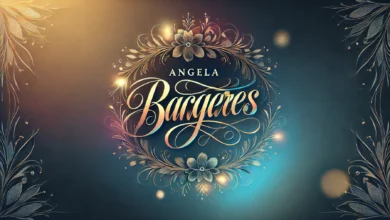Understanding the Power of ‘Each Other’: The Art of Connection in Relationships

Human connection is at the heart of every relationship, whether it’s with family, friends, colleagues, or even people from different cultures. One phrase that encapsulates the essence of building meaningful bonds is the simple yet powerful “each other.” Understanding “each other” means more than just knowing someone’s preferences or habits; it represents a deep mutual recognition, empathy, and respect. This article explores how understanding “each other” plays a crucial role in developing strong, lasting relationships, overcoming challenges, and fostering global unity.
The Concept of “Each Other” in Human Relationships
At its core, “each other” represents mutuality in relationships. It signifies not only knowing someone else’s feelings and thoughts but also genuinely caring about their well-being. The concept encourages reciprocity—when one person listens, supports, and understands the other, they are met with the same in return. This cyclical exchange strengthens the emotional bonds between individuals and creates a safe, trusting environment for them to express themselves openly.
In family relationships, understanding “each other” is essential. Parents, for instance, must comprehend their children’s needs, emotions, and developmental stages to provide the right kind of support. Similarly, in friendships, understanding each other’s fears, aspirations, and personal challenges helps build a strong emotional connection. For coworkers and business partners, mutual understanding enhances teamwork and reduces the chances of conflicts, enabling them to collaborate more effectively toward common goals.
Moreover, “each other” extends beyond just understanding someone’s circumstances. It involves a continuous effort to listen, communicate, and show empathy. When individuals make a conscious effort to understand one another, they build stronger relationships that can withstand the test of time and external challenges. In a world where misunderstandings often create friction, “each other” serves as the antidote to disconnection and discord.
Building Strong Relationships Through Mutual Understanding

Mutual understanding is the cornerstone of all healthy relationships. Active listening, empathy, and respect for another’s experiences are all key components of understanding “each other.” Active listening means being fully present when someone speaks, refraining from judgment, and providing feedback that shows you value their perspective. By being an active listener, you demonstrate that you care about the thoughts and feelings of others, fostering deeper connections.
Empathy also plays a central role in understanding each other. It’s about putting yourself in another person’s shoes and feeling their emotions as if they were your own. This ability to emotionally resonate with someone else’s experiences makes individuals feel seen and heard. Empathy helps bridge gaps, whether those gaps are created by differences in age, culture, or background. It allows for smoother communication and a reduction in the likelihood of misunderstandings or conflict.
Respect, on the other hand, involves acknowledging and valuing differences while embracing commonalities. True understanding doesn’t require agreement on every issue but demands a willingness to honor the other person’s viewpoint. Respecting someone’s emotions and opinions strengthens relationships, whether in personal connections or workplace dynamics. Mutual understanding built on respect makes relationships more resilient, as it helps partners navigate through disputes in a constructive manner.
When relationships are rooted in mutual understanding, they can weather even the most challenging storms. Conflicts become opportunities for growth rather than divisive events. Understanding each other’s points of view promotes compromise, patience, and shared solutions, leading to lasting harmony.
Challenges to Understanding “Each Other”
While the concept of understanding “each other” seems straightforward, it is often more challenging in practice due to various obstacles. Miscommunication is one of the most common barriers to mutual understanding. When people misinterpret words or actions, even small misunderstandings can escalate into significant conflicts. In relationships where communication is not clear or consistent, individuals may feel disconnected or neglected.
Cultural differences also play a role in how people understand each other. Norms, values, and customs can vary greatly from one culture to another, and this disparity can sometimes lead to confusion or offense. What one culture deems as respectful behavior might be interpreted differently in another, leading to misunderstandings. For instance, in some cultures, eye contact is seen as a sign of confidence, while in others, it can be perceived as rude or confrontational.
Technology, while connecting people across the globe, can also hinder true understanding. Social media, for example, often encourages superficial interactions where people may share highlights of their lives without delving into deeper, more meaningful exchanges. Texting and instant messaging, while convenient, can lack the emotional nuance of face-to-face conversations, leading to missed cues or misinterpretations.
Despite these challenges, it’s possible to overcome them by being patient and proactive. Open communication, cultural awareness, and the willingness to engage in deeper conversations can bridge gaps in understanding. It’s important to recognize that true empathy and connection take time and effort, especially when differences seem insurmountable.
The Role of “Each Other” in Global and Cultural Contexts
The importance of “each other” extends beyond individual relationships to the global stage. In times of crisis, whether it’s a natural disaster, a humanitarian issue, or an environmental catastrophe, understanding and cooperation among people from different parts of the world are critical. The concept of “each other” encourages empathy across borders, fostering a sense of shared responsibility for global well-being.
For example, global health crises like the COVID-19 pandemic highlighted the necessity of working together. Countries, despite their differences, collaborated on research, shared medical resources, and supported one another in the fight against the virus. The understanding that everyone is interconnected helped rally people together in the face of a common threat.
Social justice movements, too, rely heavily on the idea of mutual understanding. Whether advocating for racial equality, gender rights, or environmental protection, these movements emphasize that change is only possible when individuals and groups learn to understand and support each other’s struggles. The ability to see the world through another person’s eyes, whether on a local or global scale, is a powerful tool for fostering unity and collective action.
Additionally, cultural exchange programs, international collaborations, and global dialogues encourage people to respect and learn from one another. When we truly understand each other, we can celebrate differences and work together to solve shared problems, creating a more harmonious and peaceful world.
Conclusion
In conclusion, the phrase “each other” is not just about surface-level interaction; it’s about deep mutual understanding, empathy, and respect. Whether within families, friendships, workplaces, or across borders, understanding each other is the foundation for building strong, lasting relationships. By actively listening, empathizing, and respecting others, we can foster better communication and reduce conflicts. Overcoming challenges such as miscommunication and cultural differences requires patience and dedication, but the rewards of understanding each other are immeasurable.
By embracing the power of “each other,” we can create more connected, harmonious communities. So, the next time you engage with someone, remember the importance of truly understanding them, because the strength of any relationship lies in the ability to connect on a deeper level.
Frequently Asked Questions (FAQs)
What does “each other” mean in a relationship?
“Each other” refers to the mutual understanding, respect, and empathy that individuals share in a relationship, where both parties support and care for one another.
What are some common barriers to understanding each other in a relationship?
Miscommunication, cultural differences, and technological barriers can all hinder true understanding in relationships.
How can technology affect our ability to connect with each other authentically?
Technology can sometimes reduce face-to-face interactions, leading to superficial connections that lack emotional depth and understanding.
Can “each other” play a role in improving team dynamics at work?
Yes, when colleagues understand each other’s strengths, weaknesses, and communication styles, they can collaborate more effectively and create a more harmonious workplace.
What are some cultural differences in the way “each other” is understood?
Different cultures have varying norms and customs, which can affect how people communicate, show respect, or engage in relationships.
How do global issues illustrate the importance of understanding each other?
Global challenges like pandemics, climate change, and social justice issues require international cooperation and mutual understanding to address effectively.





